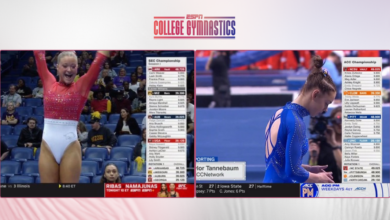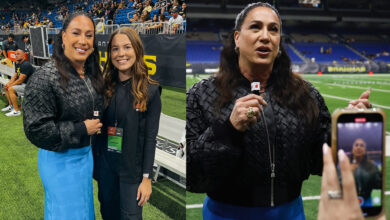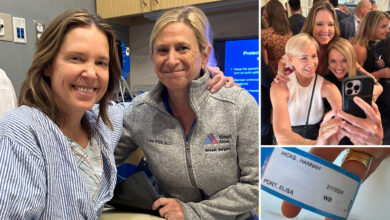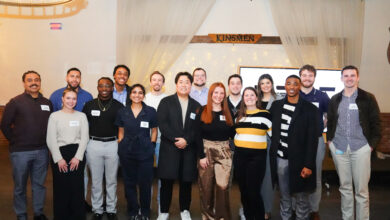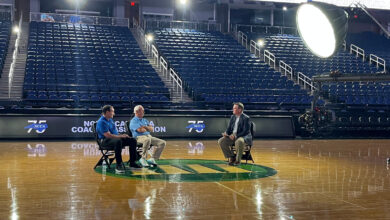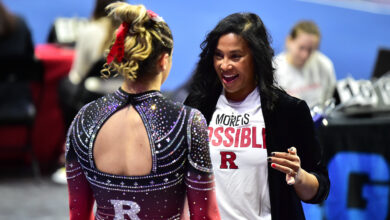Associate producer and former tennis star Tory Zawacki brings Wimbledon on-court experience to her work

LONDON — When Associate Producer Tory Zawacki takes her position in the ESPN control room at tennis majors, she brings with her not just her television production skills, but the mindset of a tennis player who has played at those venues. At the junior level, she competed in singles and doubles at all four Grand Slam events, and in 2002 won a singles match on the famed grass courts of the All England Lawn Tennis Club in Wimbledon.
That background comes to bear during the 140 live and exclusive hours of Wimbledon television ESPN presents during the fortnight of The Championships.
In Zawacki’s role, she helps create graphics, both the familiar printed panels and the computer-generated ORAD MVP analysis animations which reveal all kinds of insights to educate the viewer. These include where a ball is hit and at what height, where it lands, the path a player runs during a point and more.
“With my perspective, ideas for graphics that help explain the game come to me more naturally. . . because they are things I had to worry about as a player,” says Zawacki, who joined ESPN in 2008 and is working her third Wimbledon. “Sometimes you are just giving the news in graphics with full-page panels and ‘lower-thirds’ — that’s the TV side of me — but sometimes the tennis side comes into play and the animated analysis on highlights can be creative and instructive.”
Zawacki’s first-hand experience — and the knowledge she can impart — also serves as an asset to new members of ESPN’s tennis team who might be unfamiliar with the games nuances and subtleties.

In her playing days, Zawacki reached the finals of the US Open junior doubles a few months after that Wimbledon (where she lost in the second round to Maria Kirilenko, currently the No. 10 player in the world). She went on to play at Duke before an injury prematurely ended her career.
Along the way, she met and played against many of the big names of the game today — Victoria Azarenka, Maria Sharapova, Samantha Stosur, Svetlana Kuznetsova, Marion Bartoli and Vera Zvonareva.
In high school, she went on recruiting trips with someone from the same tennis camp, a guy named John Isner. They visited Duke and Georgia.
She went to Duke. He went to Georgia and is now the top-ranked American male. Now their paths cross at the sport’s major stages and they laugh at how life has turned out.
In her TV role, meeting the people she’s watched play or call matches growing up was a memorable experience.
“I remember my first production meeting at the 2010 Australian Open,” she says. “There was [former ESPN commentator] Dick Enberg, [commentator] Chris Fowler, [commentator and Tennis Hall of Famer] Cliff Drysdale and [analyst and former player] Mary Joe Fernandez.
“My heart was racing. I work with former NBA and NFL coaches and players on a daily basis in Bristol,” she says. “It’s great, but I wasn’t watching them growing up; I was watching and idolizing tennis players. So needless to say, I was a little more intimidated to work with tennis commentators. And I’m actually sharing thoughts and opinions with them. It was such an honor. . . my proudest moment.”
This year’s edition of Wimbledon has seen an unprecedented number of upsets and injuries leading to a second week full of lesser-known (for now, anyway) names. Does Zawacki look at this and think ruefully, “I should be out there!”?
For the answer, visit ESPN Front Row’s Facebook page.

